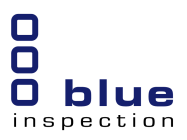2025-01-28
Contaminations of Cough Syrups
with Ethylene Glycol (EG) and Diethylene Glycol (DEG)
On the importance of thorough testing and monitoring of supply-chain of high-risk excipients
Recent cases of contaminations of oral cough syrups, leading to tragic fatalities amongst children highlight the importance of testing high-risk excipients before use and also emphasize the importance of audits at distributors and manufacturers of such high-risk excipients.
Alarmingly, between 2022-2023 there were over 300 fatalities in at least three countries due to contaminations of excipients. Most were young children under the age of five. In January 2023 the WHO reported that in at least seven countries there were several incidents of over-the-counter cough syrups for children with confirmed or suspected contamination with high levels of diethylene glycol (DEG) and ethylene glycol (EG). These contaminants are toxic chemicals, which can be fatal when taken in even small amounts, especially by children. The tragic cases have led to tightened guidelines and stricter requirements enforced by authorities worldwide.
In May 2023, the US FDA issued as of immediate effect the “Guidance for Industry on Testing of Glycerin, Propylene Glycol, Maltitol Solution, Hydrogenated Starch Hydrolysate, Sorbitol Solution and other High-Risk Drug Components for Diethylene Glycol and Ethylene Glycol”. The guidance informed that the recent cases were not the first, citing cases in the 1930’s (USA), 1990’s (Argentina, Bangladesh, Haiti, India and Nigeria) and 2000’s (Panama) with DEG poisoning resulting in deaths of hundreds of children.
The most recent cases all had the following similarities: the manufacturers of the oral liquid drug products, mostly syrups, relied on the certificates of analysis of the supplier without their own testing of the excipients for DEG and EG contaminants. In addition, the CoA was not from the original manufacturer, nor did it disclose the origin of the excipient. Therefore, besides testing high-risk excipients for contamination with DEG and EG before use, robust supply chain knowledge is essential (e.g. involvement of distributors) in order to mitigate risks of DEG and EG contamination.
The FDA guidance clearly states that for excipients where the current USP-NF monograph includes a limit test for DEG and EG as part of the applicable identity testing, the execution of these limit tests is mandatory for each batch. It is even recommended to test each container of the excipients.
Several warning letters were issued to drug product manufacturers for not testing each batch of glycerin, propylene glycol or sorbitol solution according to the full identification test requirements, including also DEG and EG impurities. Currently, the USP is working on the addition of DEG and EG limit tests to the identification of different polyethylene glycol (macrogol) types and polyethylene glycol 40 castor oil in the respective USP monographs.
The EDQM has previously emphasized that for all monographs which include DEG or EG limit tests the execution of these tests is mandatory. In addition, the EDQM has pre-published on its website the revised monograph for propylene glycol, which will come into effect in JAN 2025 with supplement 11.6 and which now also includes a GC limit test for DEG and EG.
For liquid forms of sorbitol and mannitol, actions are ongoing to introduce analytical procedures for DEG and EG. For other ethoxylated substances (such as e.g., macrogolglycerol ricinoleate, macrogolglycerol hydroxystearate, macrogol 15 hydroxystearate, nonoxinol 9, macrogol Cetostearylether), there is already a method for DEG and EG determination described in general chapter 2.4.30. The EDQM is currently evaluating whether to include reference to this chapter in adulteration sections of the corresponding monographs. If tests are described in an adulteration section of the monograph, these tests are mandatory, however, the frequency of testing may depend on risk assessment, taking into account the level of knowledge of the whole supply chain.
For liquid forms of sorbitol and mannitol, actions are ongoing to introduce analytical procedures for DEG and EG. For other ethoxylated substances (such as e.g., macrogolglycerol ricinoleate, macrogolglycerol hydroxystearate, macrogol 15 hydroxystearate, nonoxinol 9, macrogol Cetostearylether), there is already a method for DEG and EG determination described in general chapter 2.4.30. The EDQM is currently evaluating whether to include reference to this chapter in adulteration sections of the corresponding monographs. If tests are described in an adulteration section of the monograph, these tests are mandatory, however, the frequency of testing may depend on risk assessment, taking into account the level of knowledge of the whole supply chain.
High-risk excipients need to be tested before use to ensure product safety for patients worldwide. Suppliers of finished-dosage forms who purchase such high-risk excipients should ensure that thorough testing takes place, the supply-chain is monitored and, if required, the excipient distributors and suppliers should be audited on a regular basis.
Should you require audits to be performed at your excipient suppliers, please contact us at blue inspection for further information.


